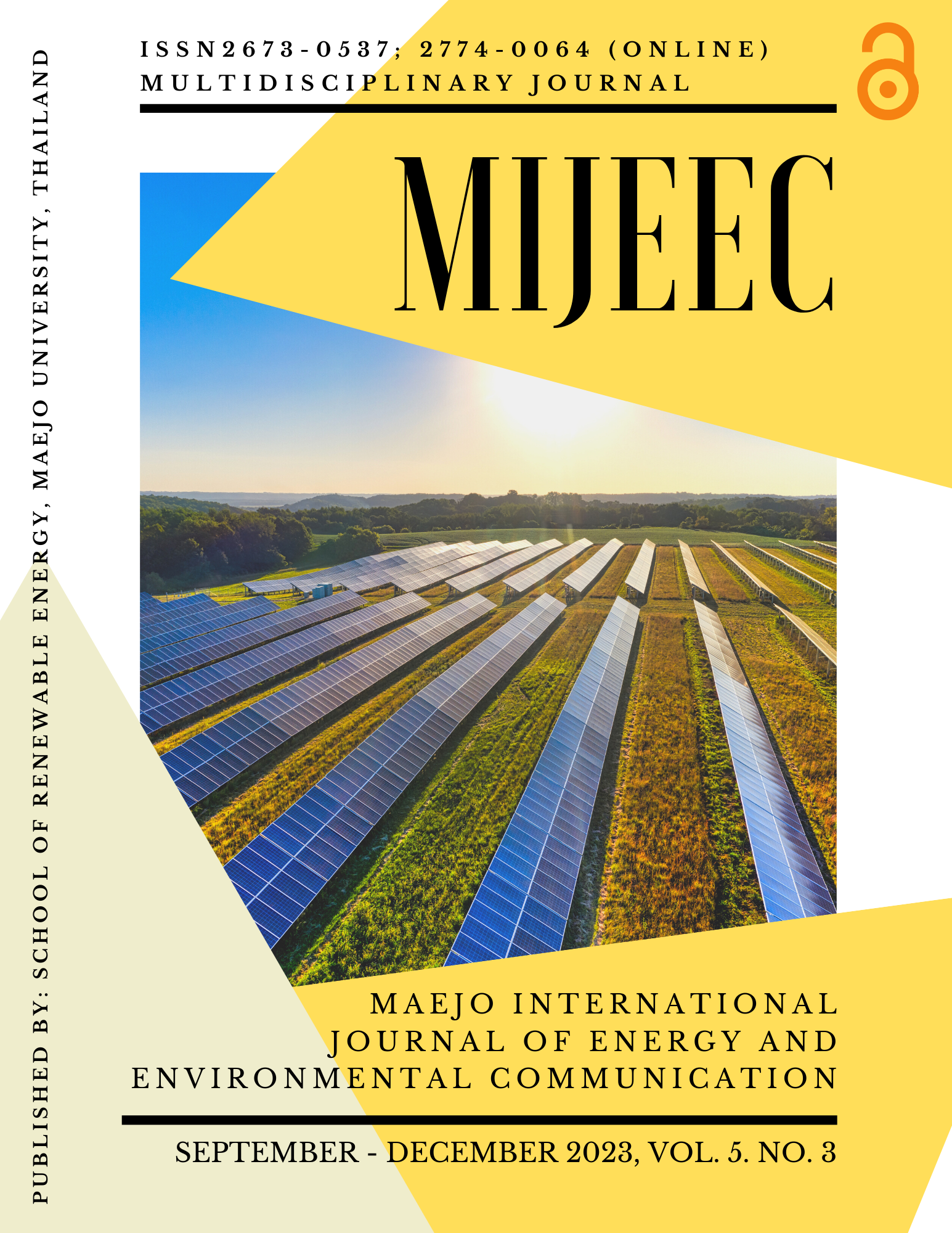Energy-efficient extraction and environmental impact of the kinetic release of total phenolic compounds from longan extract beads
Main Article Content
Abstract
The purpose of this work was to investigate the kinetics of the total phenolic compound release from hydrogel in the form of gel beads with alginate and alginate with other wall materials consisting of alginate beads (100A), gelatin (30G/70A), gum arabic (30GA/70A), and pectin (30P/70A) in two media solutions: simulated gastrointestinal fluid (SGF) and simulated intestinal conditions (SIF) for 6 hours. 30GA/70A was found to have an optimal encapsulation effectiveness of 74.86 percent based on the test findings. The release characteristics of 30GA/70A beads tended to the total phenolic compound release was higher than other formulas. The kinetic model of Higuchi and Korsmeyer- Peppas' release It is applied to all kinds of beads to release the total phenolic compound. The best-fitting model in terms of mean R2 (0.989) was found to be the Korsmeyer-Peppas model. This indicates the principle of diffusion controlled. Moreover, the analytical procedures require sample pretreatment since direct sample processing is usually impossible. MAE is an eco-friendly option that reduces solvent use and energy consumption while enhancing recovery rates. MAE is a potential, cost-effective way to extract valuable plant components with low environmental impact.
Article Details

This work is licensed under a Creative Commons Attribution-NonCommercial-NoDerivatives 4.0 International License.
Copyright © 2019 MIJEEC - Maejo International Journal of Energy and Environmental Communication, All rights reserved. This is an open-access article distributed under the terms of the Creative Commons Attribution-NonCommercial- Attribution 4.0 International (CC BY 4.0) License






